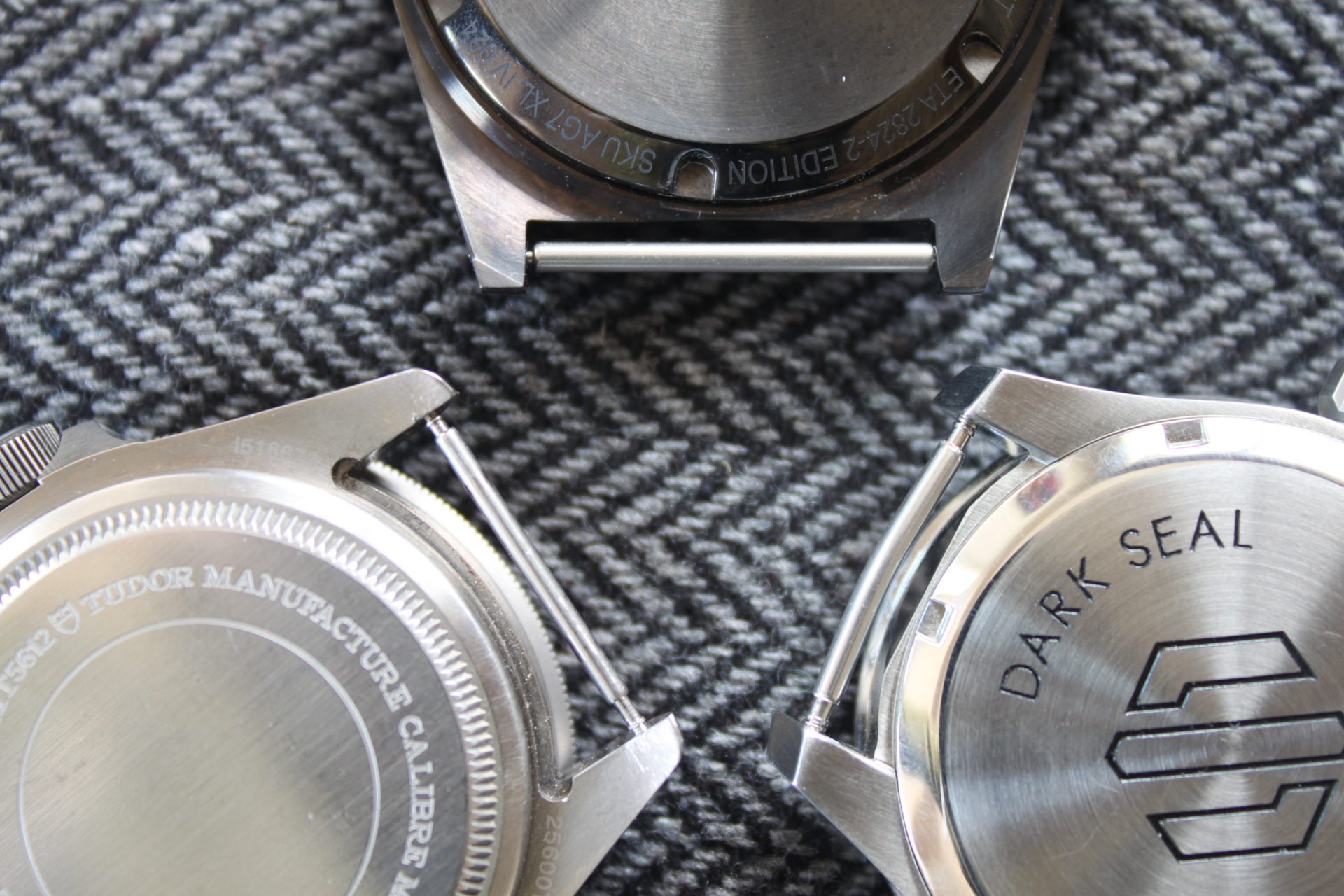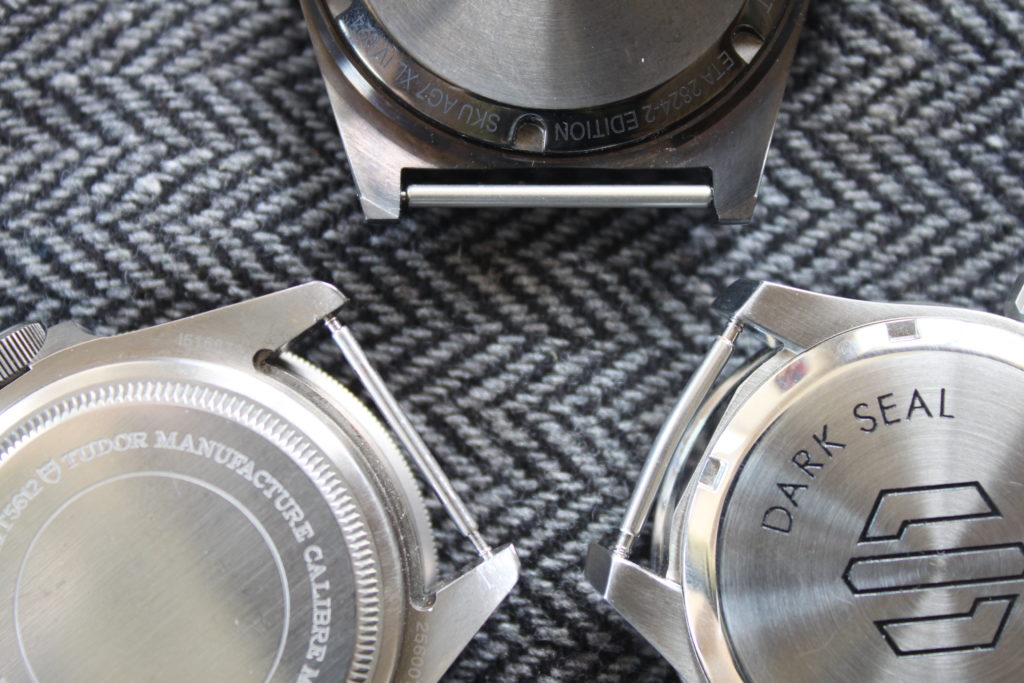 Nestled between the lugs, the humble spring bar has just one job: to keep your strap attached to your watch. Usually forgotten and ignored, this simple contraption has remained relatively unchanged for the past century as a cylinder encapsulating a spring compressed by two sliding pins on each end. Compress the pin, out pops the spring bar; slide it between the lugs and relieve the pressure and it snugs nicely into small holes drilled in the lugs. It’s an elegant solution to the problem of securely fastening straps to the watch head. Yet, this small, inexpensive piece of metal also represents a vulnerable failure point for an otherwise robust watch. Beyond ensuring we’re using the correct length, how many of us think about spring bars at all? Tip diameter, bar diameter, construction method, and material all contribute to the reliability of spring bars. We’re here to provide a bit of simple advice for helping you choose the right spring bars for your watch. Making the correct — and still inexpensive — decision can greatly reduce the risk of failure.
Nestled between the lugs, the humble spring bar has just one job: to keep your strap attached to your watch. Usually forgotten and ignored, this simple contraption has remained relatively unchanged for the past century as a cylinder encapsulating a spring compressed by two sliding pins on each end. Compress the pin, out pops the spring bar; slide it between the lugs and relieve the pressure and it snugs nicely into small holes drilled in the lugs. It’s an elegant solution to the problem of securely fastening straps to the watch head. Yet, this small, inexpensive piece of metal also represents a vulnerable failure point for an otherwise robust watch. Beyond ensuring we’re using the correct length, how many of us think about spring bars at all? Tip diameter, bar diameter, construction method, and material all contribute to the reliability of spring bars. We’re here to provide a bit of simple advice for helping you choose the right spring bars for your watch. Making the correct — and still inexpensive — decision can greatly reduce the risk of failure.
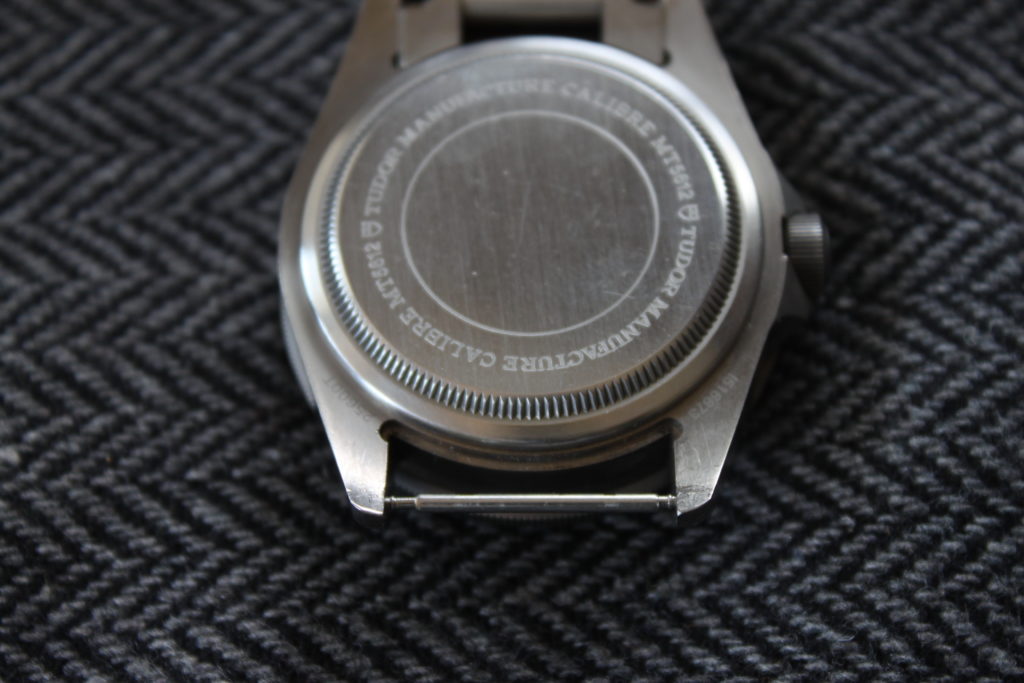
Many of us love purchasing new straps to change up the look and feel of our watch, but the fact is that most of us don’t have the interest or inclination to figure out what spring bar we should be using. One could spend countless hours poring over spring bar spec sheets (yes, those are a thing), ordering and testing spring bars from different manufacturers, and, through trial and error, learning all sorts of lessons along the way. Or you could just read on and find out everything you need to know.
Quality and Quantity
Spring bars are cheap, no question. You can go on Amazon.com and buy a box of spring bars for roughly $0.01 each, but like so many things, you get what you pay for. The first thing is to make sure you’re buying through a reputable vendor and that the spring bars are constructed from 304L or 316L stainless steel. If the internal spring isn’t made of stainless steel (doubtful on a one-cent spring bar), you risk internal rust and premature failure. You may end up spending a dollar or two on a spring bar, but considering you’re trusting it with your cherished timepiece, it’s worth sacrificing the price of a cup of coffee. As to when you should replace your spring bars (yes, you should replace them, though I’ll freely admit that I only do so after a failure), there’s no magic number, but some suggest every 6-12 months.
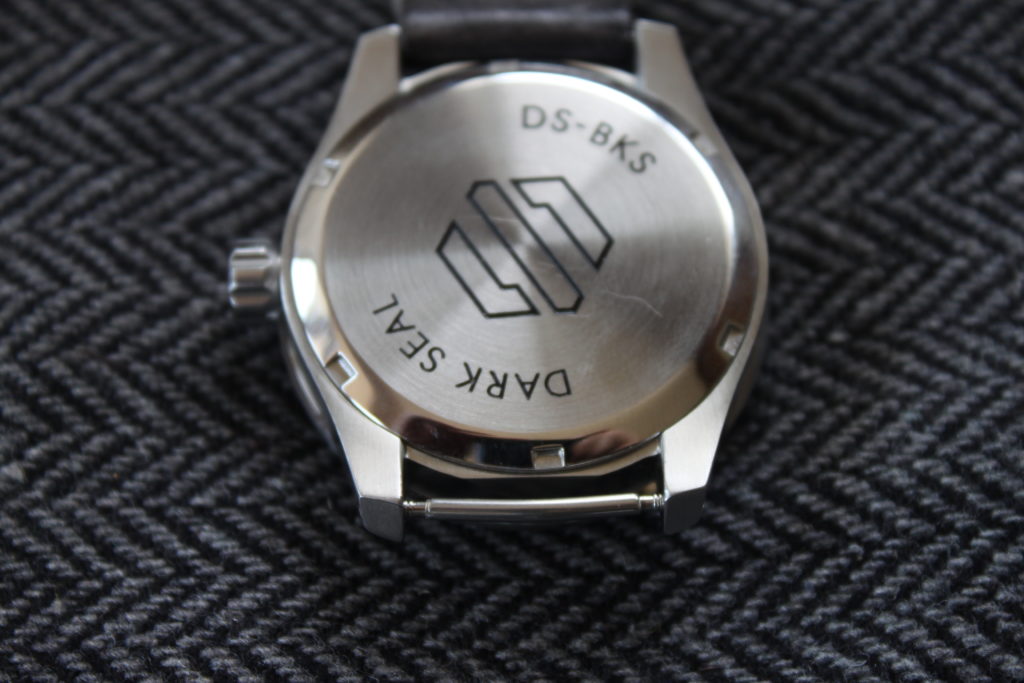
Types of Spring Bars
Most watches rely on single- or double-flanged spring bars. These extra flanges near the tip allow for easy removal of the spring bars with a pronged spring bar tool. However, there are a number of specialized spring bars made to suit different watches. For instance, shoulderless spring bars are made specifically for watches with drilled lugs—the advantage is that they can act as a semi-permanent bar between the lugs; if the spring inside them fails, they’re designed to stay within the lugs and not release the bars. Seiko Fat Bars are, not surprisingly, wider diameter ‘fat’ spring bars made to be robust and ISO rated to 50lbs of pressure. Curved spring bars provide a bit of extra clearance between the watch case and the spring bar, which can be especially useful on watches with tight clearances or for fitting thicker straps. Finally, quick-release spring bars are made specifically for easy-removal straps and use a slider to release the strap without tools. Though convenient and more robust as they become standard issue, be careful because they often only come in a single tip diameter, can have weak springs for easy removal, and because the spring bar rotates due to the quick release lever, you run the risk of wallowing out the lug holes. Plus, it’s often impossible to replace the spring bar without replacing the strap!
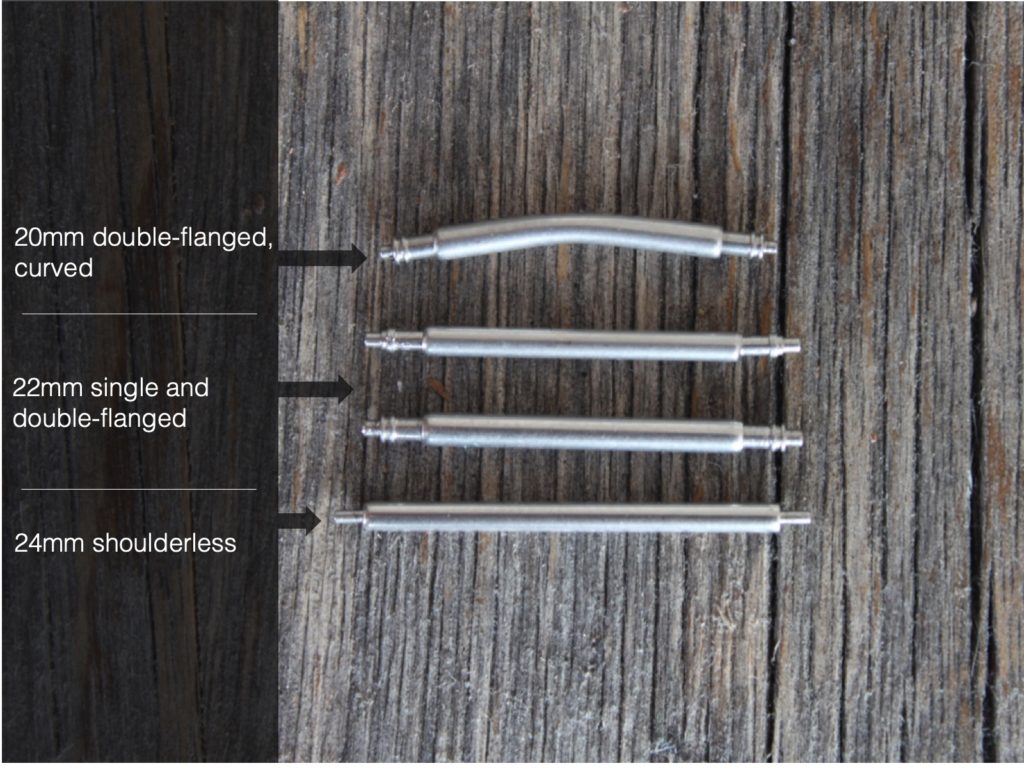 Keep in mind, different styles of watches don’t necessarily need different types of spring bars. Some people swear by ISO-rated spring bars for dive watches, but a high-quality Swiss-made spring bar that’s configured correctly for your watch will easily handle over 50 pounds of pressure.
Keep in mind, different styles of watches don’t necessarily need different types of spring bars. Some people swear by ISO-rated spring bars for dive watches, but a high-quality Swiss-made spring bar that’s configured correctly for your watch will easily handle over 50 pounds of pressure.
Parts of the Spring Bar & How to Choose the Correct Fit
Length: First things first. Measure the distance between your lugs, or look it up on the manufacturer spec sheet, and ensure you’re ordering the right length.
Middle diameter: This is the thick central part of the spring bar. Choosing the correct diameter generally comes down to using the thickest diameter that will still ensure that you are able to slide the spring bar into a bracelet or strap hole, or one that leaves enough space between the spring bar and case to slip in a single-pass strap.
Tip diameter: This is the part most of us ignore (I confess I lived for years in tip-diameter ignorance), but it’s the one direct contact point between the spring bar and your watch. If the tip diameter is too narrow, you create space and the potential for failure. (Here’s a useful video that demonstrates how to measure the tip diameter of your current spring bars, as well as the lug hole width.) An easy way to check the fit is to move the bars forward and backward, if there’s motion or you hear clicking, that means there’s an air gap between the lug holes and bar tips; time to pick a different spring bar.
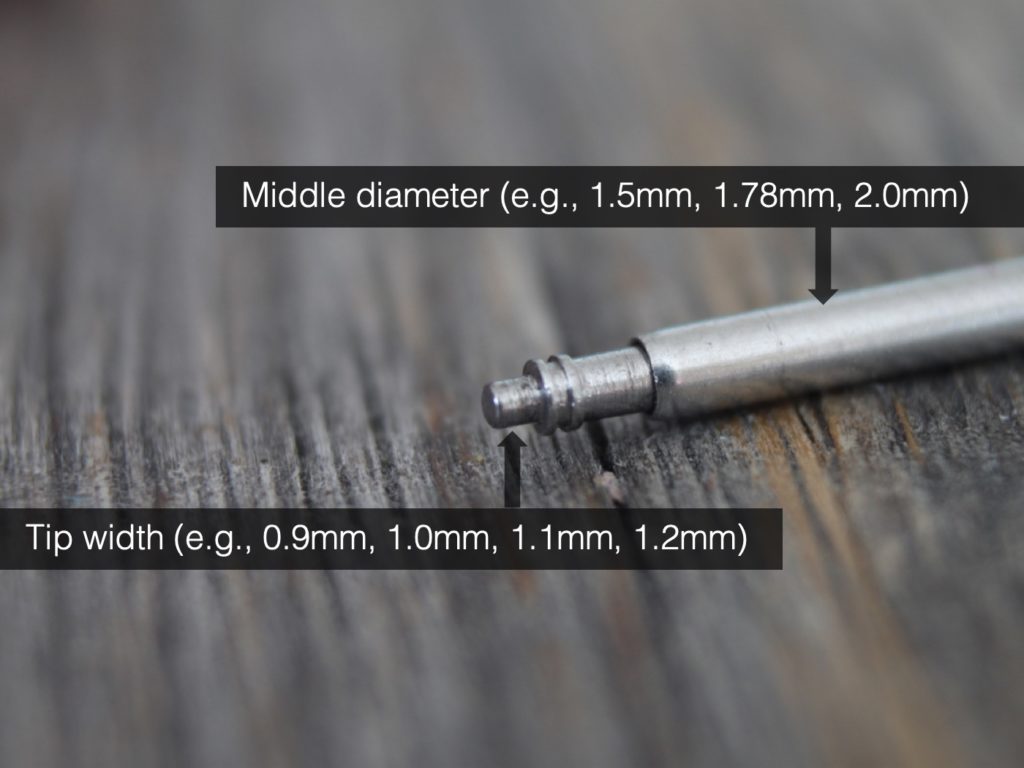
Finding and buying spring bars
While you can easily search eBay or Amazon for spring bars and find them for pennies, your safest bet is to go through a reputable dealer to ensure you’re purchasing high-quality spring bars. For example, you can purchase 100% stainless steel, Swiss-made spring bars through watch part sites, like Otto Frei and Esslinger. Sure, they’ll set you back a couple bucks each, but buy a dozen and they’re just over a dollar each.
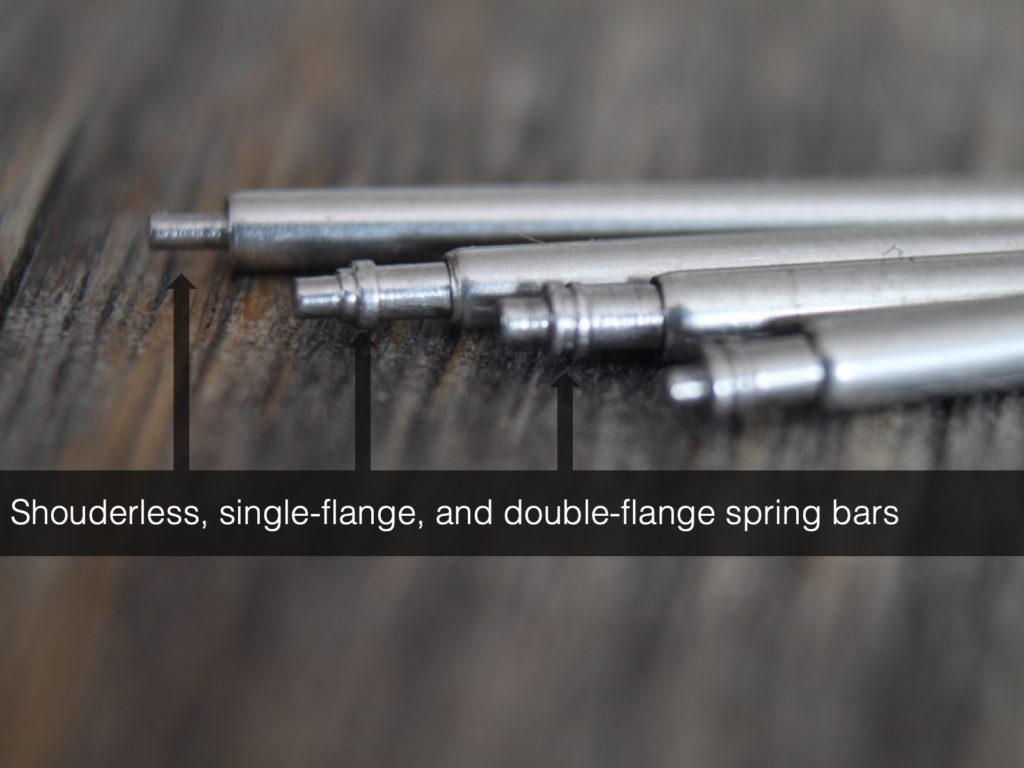
Final Thoughts
Making sure you’re using the correct spring bar for your watch is a simple, inexpensive investment that will reduce the risk of catastrophic failure. Simply put: Always buy quality spring bars and take a few minutes to make sure you’re using the proper type, length, and diameters to complement your watch. If nothing else, it may help you sleep a bit more soundly.
Thanks to Terry Williams of UTE Watch Co. for some of the images and tips included in this article.
